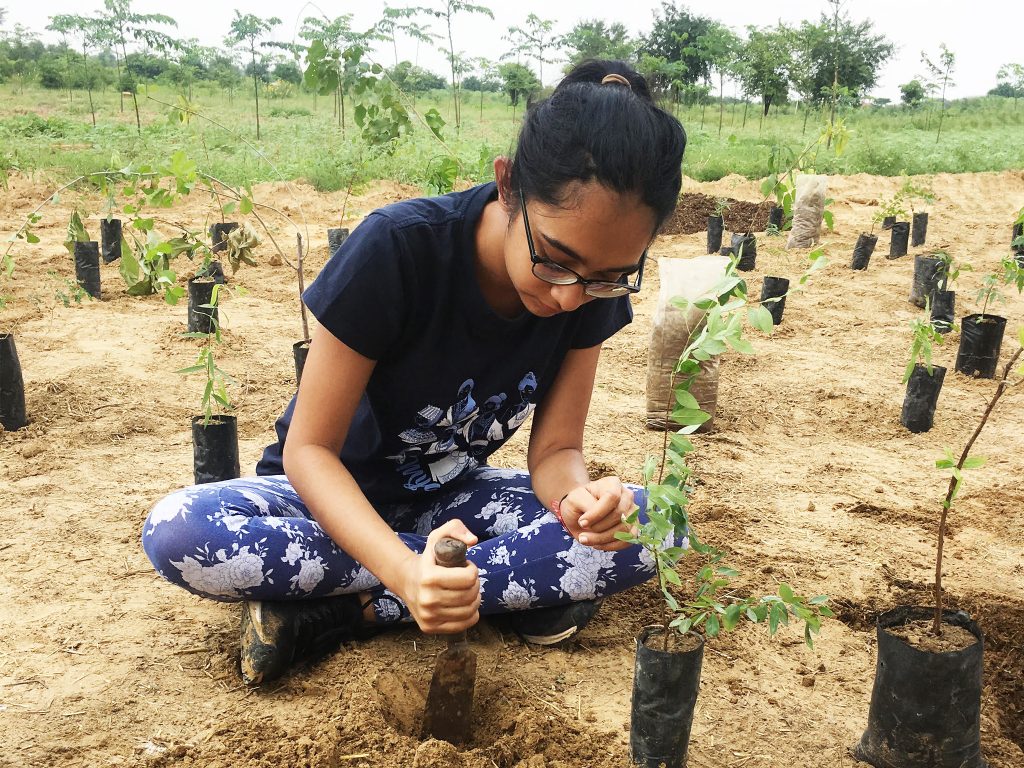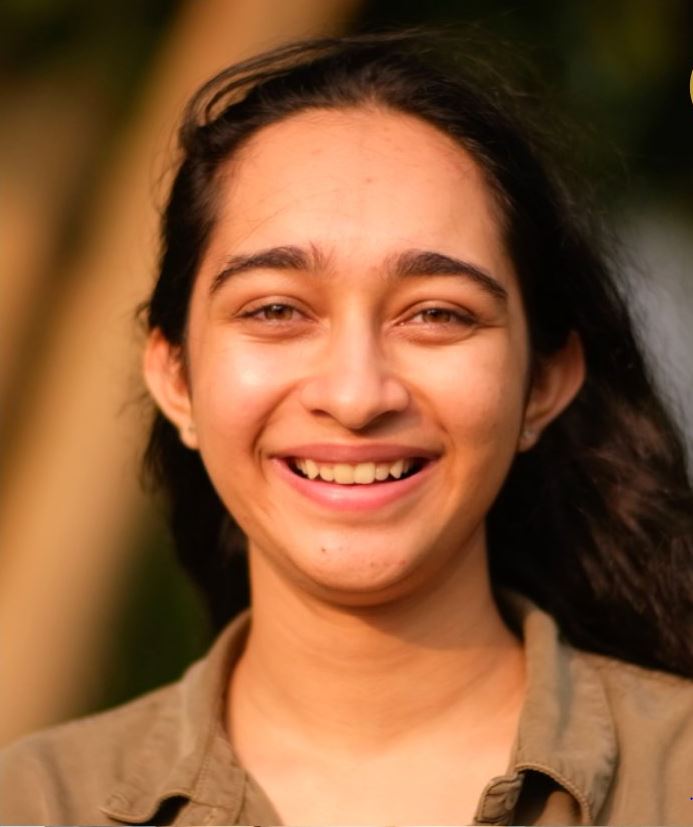(May 14, 2024) When she was a junior at the American School of Bombay, Aadya Joshi founded The Right Green, an organisation that spreads awareness about native plants and their ecological role in providing food and habitat for local species of insects and birds. Now a student at Stanford University, Aadya also received the prestigious Children’s Climate Prize in 2020.
Everyday, Aadya Joshi would notice the neighbourhood police station on her way home from school in Mumbai. Outside the station was a vacant lot, full of confiscated vehicles that had not been claimed by their owners. Locals had also begun adding their trash, and the result was a landfill in the middle of a residential neighbourhood. Aadya wondered why nobody was doing anything about it, and in the end, decided that she would be the one to try. “In the end, I went to the police commissioner and the inspector and I said I can make a garden in this garbage dump if it’s not being used productively,” the Global Indian says. The police took a while to decide but ultimately agreed.

Aadya Joshi when she was in high school
Aadya gathered friends and residents together and for the next month, they met every weekend to clean out the trash. Then they removed the contaminated soil and replaced it, and turned some of the scrap metal into pots. Finally, they planted a garden in the old garbage dump. It was a success for Aadya in more ways than one. She saw that her work could have an impact, and understood the power of communities. She wanted to do more and began attending workshops, where she learned that restoring green cover is more than just planting trees. The key is to plant native plant species, even in a place where urbanisation has long since taken over plant cover.
The importance of native species
From there, Aadya, who was then a student at the American School of Bombay, began her own journey of learning. Eventually, she arrived at the work of Dr Doug Tallamy, a professor of Entomology and Wildlife Ecology at the University of Delaware. He taught her how that planting non-indigenous species can do more harm than good, while native plants will also help restore and nurture the ecosystem of local insects and in turn, birds.
“We are faced with the sixth mass extinction of species, majorly because of the loss of natural habitats and native plants. It has disturbed the food cycle,” Aadya says. “Native plants are a vital source of food for insects, and in turn for other species like birds and small animals. Hence the loss of native plants and their replacement with exotic, non-native plants has a cascading effect that results in a significant decline in biodiversity.” In fact, she realised that pigeons and crows dominate Mumbai because the trees, which are not local, don’t support biodiversity.
This is a remnant of colonial times, as the British had planted hundreds of foreign species of flora across the country. These species, like eucalyptus, were adopted by locals and now cover huge swathes of land, but are not conducive to other plants and trees, or even so to birds, bees and other insects. “In India, but especially Mumbai, you see a lot of colonial, non-native invasive plants,” says Aadya. “For example, rain trees. People say they have been here for so long they must be a vital part of our ecosystem.” In truth, rain trees are native to Costa Rica and support wildlife that belongs to the ecosystem there. “If you plant native plants, then the insects come back, the butterflies come back, you have caterpillars, and with them the birds come back,” she adds.
The Right Green
Aadya had learned that simply planting trees is not the answer, but how many others know that? Could she teach people what they should be planting and why? That’s how Aadya launched The Right Green, in 2018, and began by offering workshops for children between the ages of five and 12. Starting out, she tested her ideas on her brother, to see if he could absorb her message. The idea was for kids to learn and also have fun. She also held workshops for adults, corporates and municipal authorities and worked to facilitate the development of native biodiversity gardens.
“The first part of the workshop gets them into nature, since we have a lack of open spaces in Mumbai,” Aadya explains. “The second thing is that I try to teach them how native plants support biodiversity, while non-native plants don’t.” The participants can explore the park they’re in, and try and identify trees based on certain clues, and to observe the insects and birds they support. For instance, they can see for themselves that a mango tree is full of insect and avian life, where a rain tree might not even have any nests in its topmost branches. She even developed a unique financial model – the participants, if they find the workshop useful, pay it forward and cover the cost for the next batch of students. This also helps her take her mission to people from weaker financial backgrounds.


Aadya Joshi is the founder of The Right Green
The idea did well and soon parents of her students were also reaching out for advice on what to put in their home gardens. This led Aadya to phase two of The Right Green. She began building a database of native plants and ranked them by the amount of biodiversity they could support. She was following in the footsteps of Dr Tallamy, and reached out to him to learn more about his methods. “What I want is to create a resource that a lot of people can use so that when they plant their gardens, they will seed well,” Aadya remarks.
Follow The Right Green on Instagram

